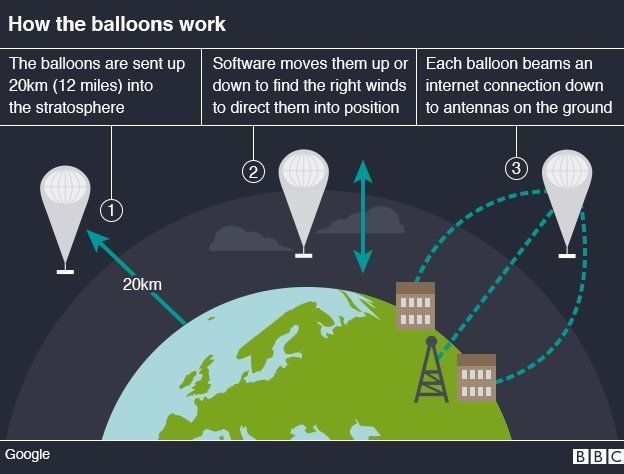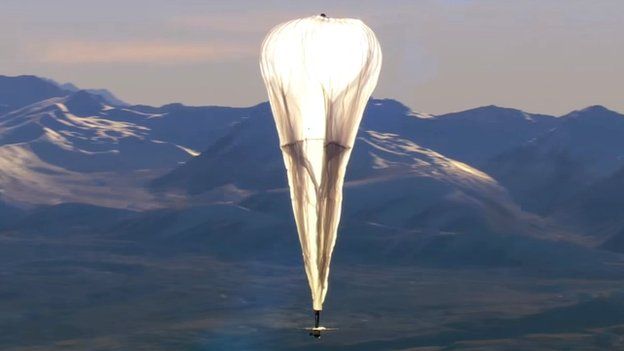The declaration coincides with the announcement that three of Indonesia`s mobile networks intend to start testing Project Loon`s transmissions next year.
One expert said the plan had benefits over other solutions.
Sri Lanka previously signed a separate agreement signalling its wish to be another participant in the giant helium balloon-based scheme.
4G-like speeds
Google first revealed its superpressure balloon plan in June 2013, when about 30 of the inflatable plastic "envelopes" were launched from New Zealand.

Beneath each lighter-than-air balloon are hung: two radio transceivers to receive and send data streams, plus a third back-up radio a flight computer and GPS location tracker
an altitude control system, which is used to move the balloon up and down to find winds that will take it in the desired direction solar panels to power all the gear
The original set-up provided 3G-like data speeds, but the kit can now supply connected devices with about 10 megabits a second to connected devices via antennae on the ground. For comparison`s sake, the average 4G connection in the UK is 15Mbit/sec.
There have also been other advances.
"In the early days, the balloons would last five or seven or 10 days. Now we have had balloons that have lasted as long as 187 days," Mike Cassidy, vice-president of Project Loon, told the BBC.
"We`ve also improved the launch process.
"It used to take 14 people an hour or two to launch a balloon, now with an automated crane we can launch a balloon every 15 minutes with two or three people."

If all goes according to plan, he added, the experiment should achieve one of its goals in 2016.
"[We need] about 300 balloons or so to make a continuous string around the world," he explained.
"As one moves along with the wind out of range, another one comes to take its place.
"We hope next year to build our first continuous ring around the world, and to have some sort of continuous coverage for certain regions.
"And if all goes well after, then after that we will start rolling out our first beta commercial customers."
Because each balloon only provides connectivity to a ground area 40km (24.9 miles) in diameter below it, the initial ring will be limited to a relatively small part of the planet as it circles a section of the Southern Hemisphere.
More about:
















































